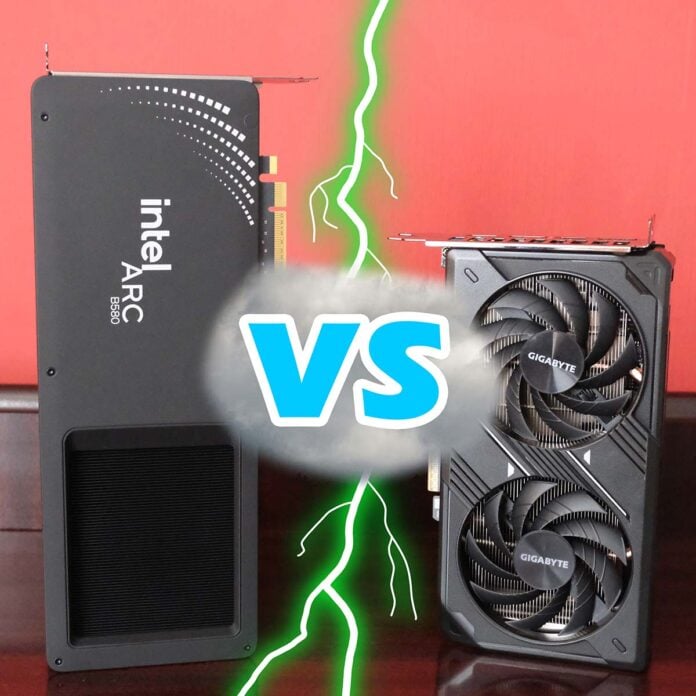The introduction of Nvidia GeForce RTX 5050 finally affords the graphics card market another $250 option other than Intel Arc B580. However, choosing between the two isn’t as simple a task as you might think.
In an effort to illustrate the differences between these two would-be budget darlings in this versus guide, I’m diving into their specifications and performance across a variety of applications. This is arguably one of the most important clashes within the graphics card market, making it one you don’t want to misunderstand or miss outright.
Specs
While Intel is David to Nvidia’s Goliath – how times have changed – when it comes to experience in the dedicated graphics card market, the sandal is on the other foot in many respects if comparing each company’s $250 offering.
In terms of die size, RTX 5050’s GB207 is far smaller at 149mm2 than the 272mm² BMG-G21 at the heart of Arc B580. Though relatively petite, the Blackwell GPU packs 16.9bn transistors across its surface area, making the chip far more dense than its rival which fits 19.6bn. Nvidia has TSMC N4 to thank for this, with Intel sticking to the less-advanced N5 process.
| RTX 5050 | Intel Arc B580 | Ratio | |
|---|---|---|---|
| Released | Jul 2025 | Dec 2024 | – |
| Codename | Blackwell | Battlemage | – |
| GPU | GB207 | BMG-G21 | – |
| Process | TSMC N4 (4nm) | TSMC N5 (5nm) | – |
| Transistors | 16.9bn | 19.6bn | 0.86 |
| Die size | 149mm2 | 272mm² | 0.55 |
| Shaders | 2,560 | 2,560 | 1.00 |
| Boost clock | 2,572MHz | 2,670MHz | 0.96 |
| SM/EU count | 20 of 20 | 20 of 20 | 1.00 |
| RT accelerators | 20 (4th Gen) | 20 (2nd Gen) | 1.00 |
| AI accelerators | 80 (5th Gen) | 160 (2nd Gen) | 0.50 |
| ROPs | 32 | 80 | 0.40 |
| Memory | 8GB | 12GB | 0.66 |
| Memory type | GDDR6 | GDDR6 | – |
| Memory clock | 20Gb/s | 19Gb/s | 1.05 |
| Memory interface | 128-bit (PCIe 5.0 x8) | 192-bit (PCIe 5.0 x8) | 0.66 |
| Memory bandwidth | 320GB/s | 456GB/s | 0.70 |
| Board power | 130W | 190W | 0.68 |
| Launch MSRP | $250 | $250 | 1.00 |
Though a multitude of architectural differences separate the innards of RTX 5050 and Arc B580, the two cards each carry the same amount of shaders and Streaming Multiprocessors (Execution Units). Clock speeds are broadly similar too, with Intel pushing frequencies slightly higher to the tune of 98MHz.
Nvidia’s hardware accelerators are more mature in their design than Intel’s, but experience isn’t always a trump card. While RTX 5050 and Arc B580 mirror one another in RT cores, the Battlemage GPU has double the amount of AI cores to play with.
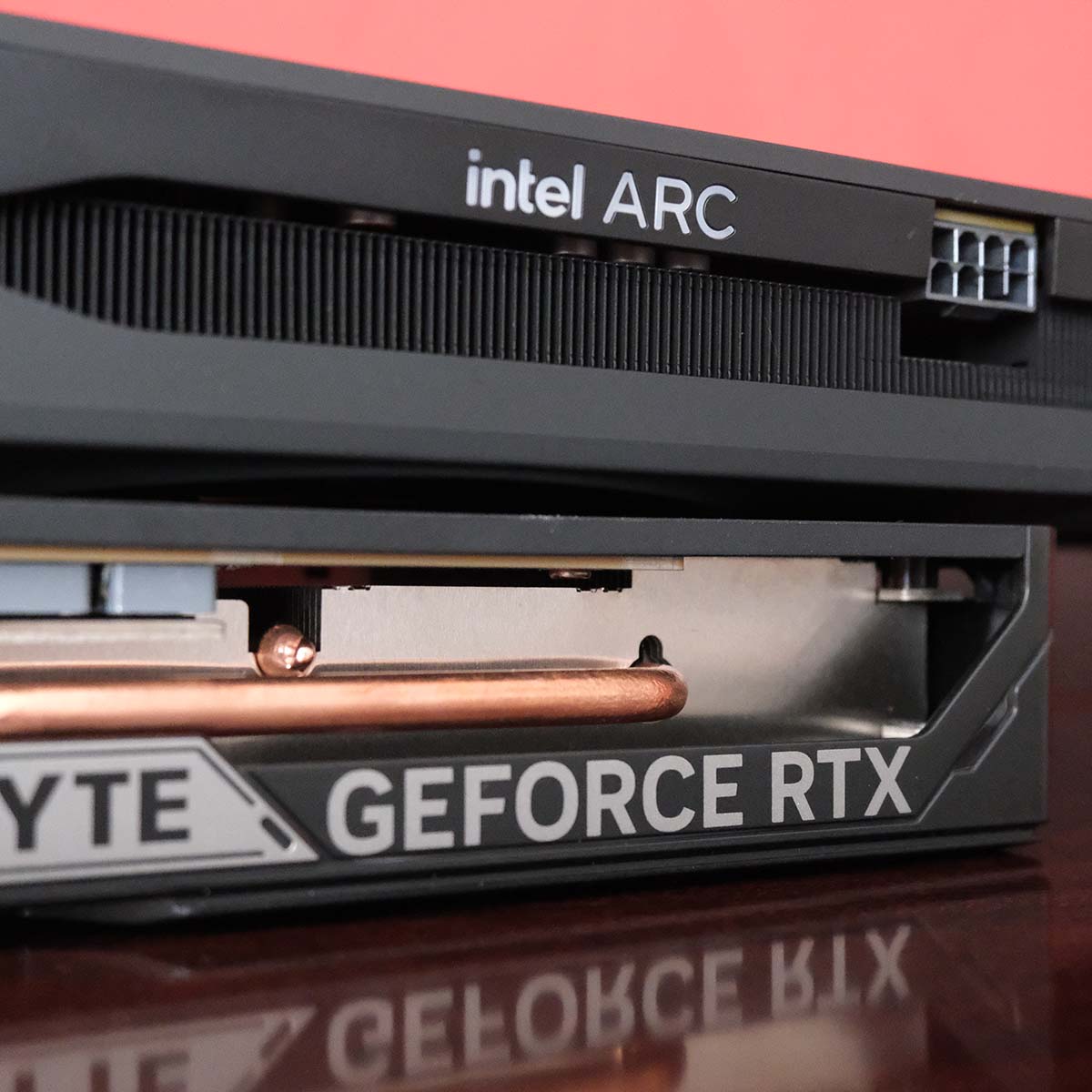
The most appreciable difference between the two graphics cards comes down to memory configuration. Arc B580 is superior in this regard in all ways but one, with higher capacity, a wider bus, and greater total bandwidth. RTX 5050 does have slightly faster memory modules but a difference of 1Gb/s is negligible in the face of its rival’s other advantages.
60W separates the TDP of RTX 5050 (130W) and Arc B580 (190W). There’s no denying Nvidia’s card is the more efficient contender but one wonders how much more performant the pixel pusher would be with a few more watts behind it.
Performance
For this versus guide, I’ve given both RTX 5050 and Arc B580 another chance to prove their worth with the latest driver optimisations under their belts. Each card also faces fresh challenges as I swap in two games that were not present in either review, in service of providing further examples of ray tracing and more-modern titles.
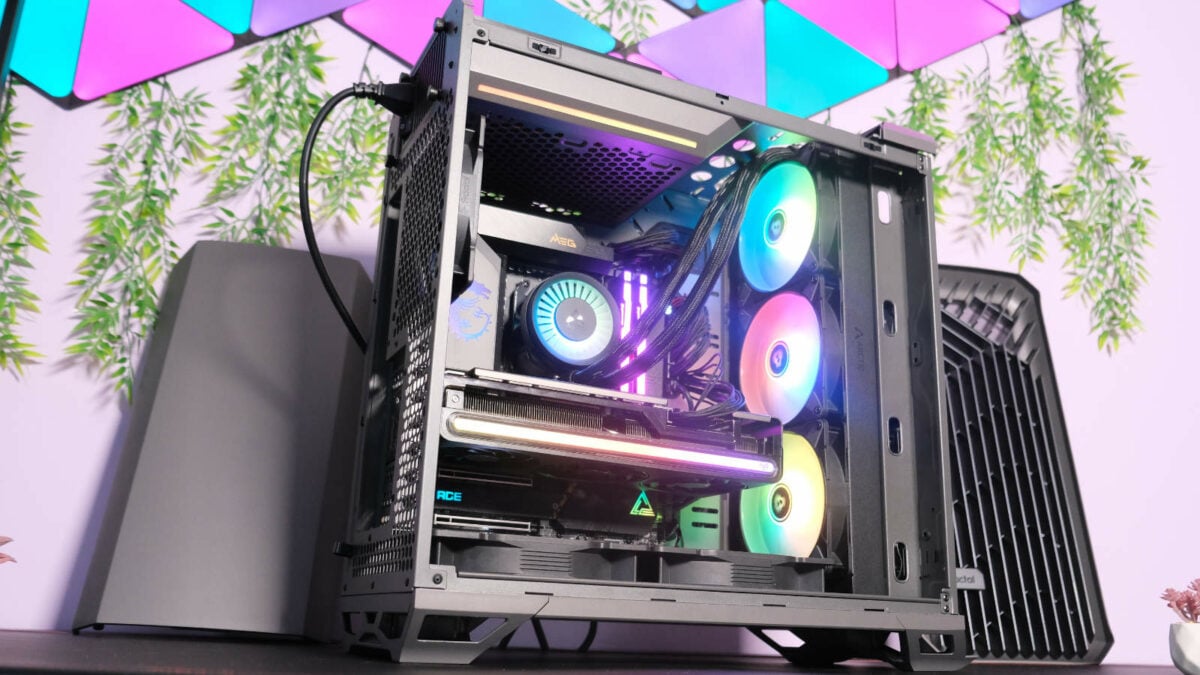
Our 7950X3D Test PCs
Club386 carefully chooses each component in a test bench to best suit the review at hand. When you view our benchmarks, you’re not just getting an opinion, but the results of rigorous testing carried out using hardware we trust.
Shop Club386 test platform components:
CPU: AMD Ryzen 9 7950X3D
Motherboard: MSI MEG X670E ACE
Cooler: Arctic Liquid Freezer III 420 A-RGB
GPU: Sapphire Nitro+ Radeon RX 7800 XT
Memory: 64GB Kingston Fury Beast DDR5
Storage: 2TB WD_Black SN850X NVMe SSD
PSU: be quiet! Dark Power Pro 13 1,300W
Chassis: Fractal Design Torrent Grey
I’ve tested both RTX 5050 and Arc B580 at FHD (1080p) and QHD (1440p), to demonstrate the benefits and limits of their respective memory configurations.
Apps & AI
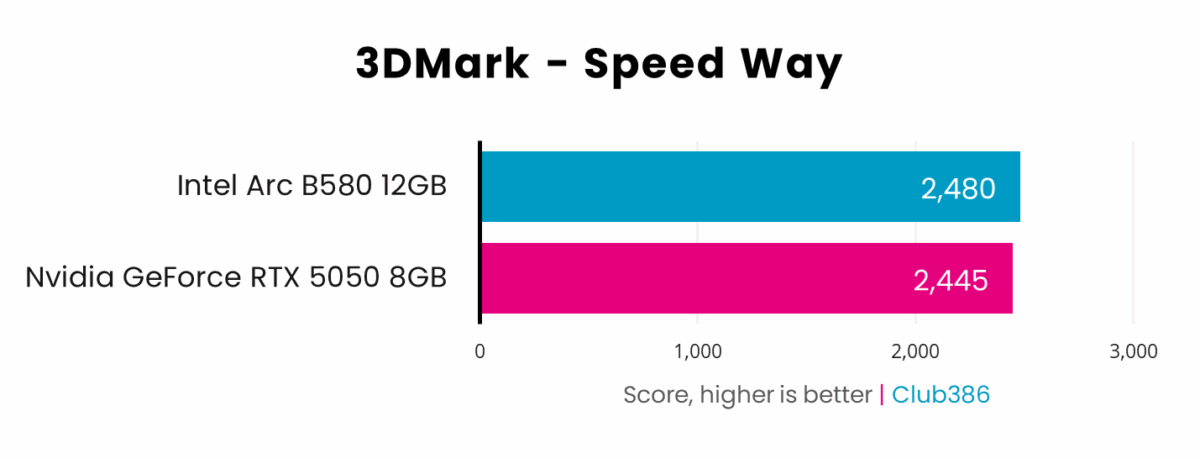

Facing off in 3DMark, Arc B580 emerges the winner over RTX 5050 in both Speed Way and Steel Nomad benchmarks. It’s a close-fought battle in the first test, but the latter proves much more one-sided.
Though these scores don’t perfectly translate into real-world performance, they do provide an informed estimate for gaming benchmarks. In short, these two cards have broadly comparable ray tracing chops but Arc B580 handles rasterisation more competently than RTX 5050.
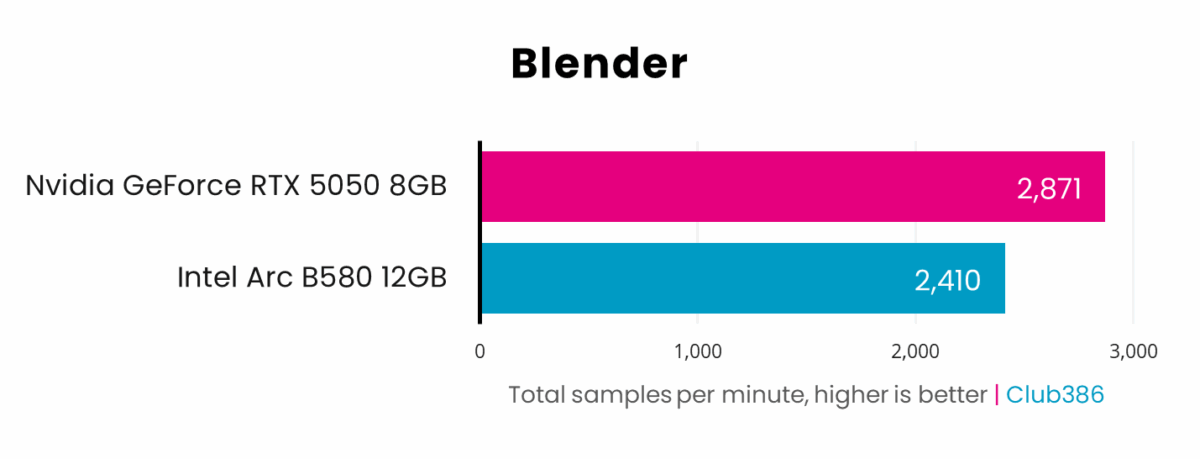
Nvidia expectedly reigns supreme in Blender, as RTX 5050 provides an additional 461 total samples per minute. Though Arc B580 falls short of a win, this gap is impressively small, particularly given competing Radeon cards are relatively much further behind.
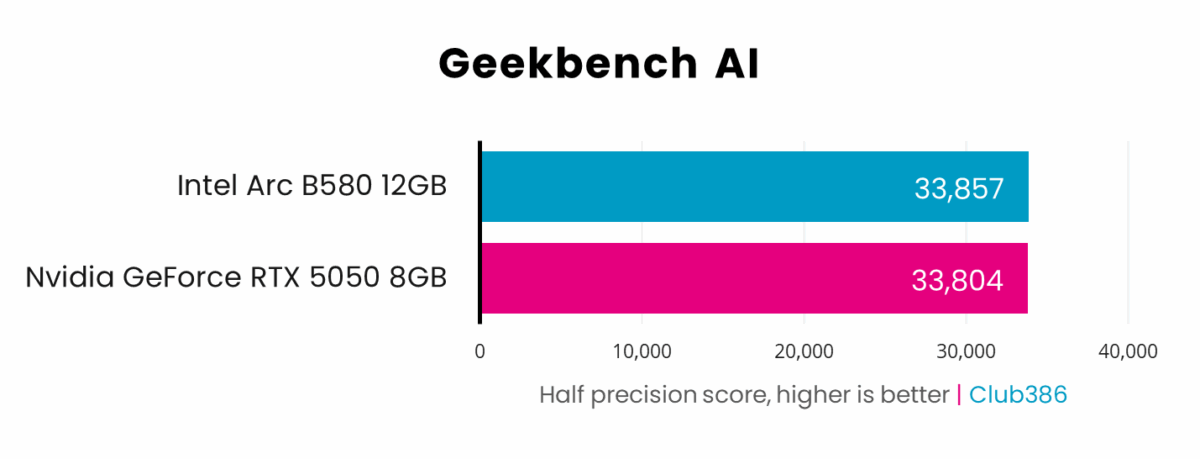
It’s practically a dead heat between RTX 5050 and Arc B580 in Geekbench AI. Just 53 points separate the two graphics cards’ half precision capabilities, but it’s ultimately Intel’s contender that takes the win.
Importantly, these results are reflective of each card using the ONNX framework. Arc B580 is able to use OpenVINO, while RTX 5050 cannot, turbocharging its score all the way up to a whopping 43,049.
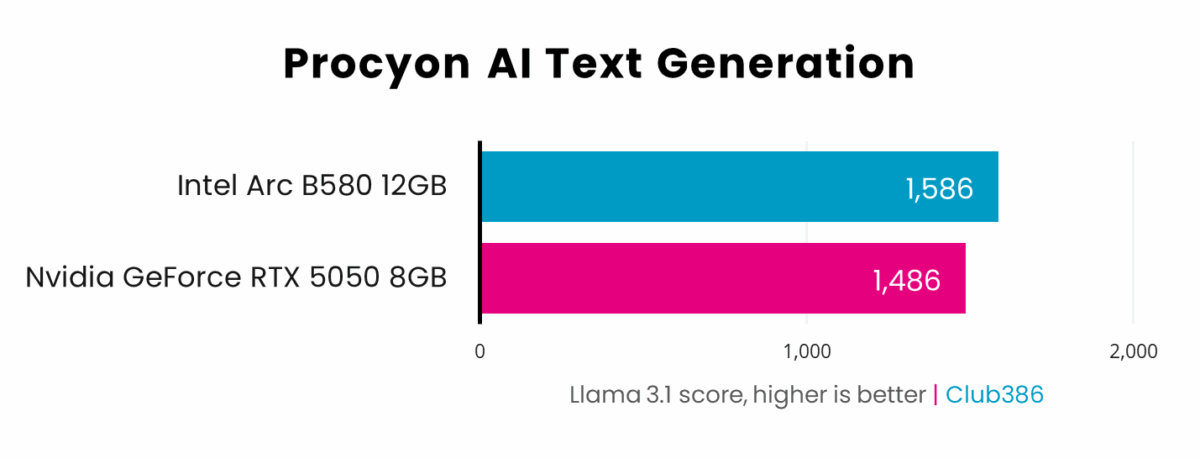
Intel beats Nvidia in another AI battleground, this time Procyon AI Text Generation’s Llama 3.1 benchmark. Arc B580’s lead is slightly more decisive this time, clipping past RTX 5050 by 100 points.
Once again, these scores are indicative of performance using the ONNX framework. Switch Arc B580 over to OpenVINO and the card catapults ahead of RTX 5050, as its score rises to 2,659.
Gaming
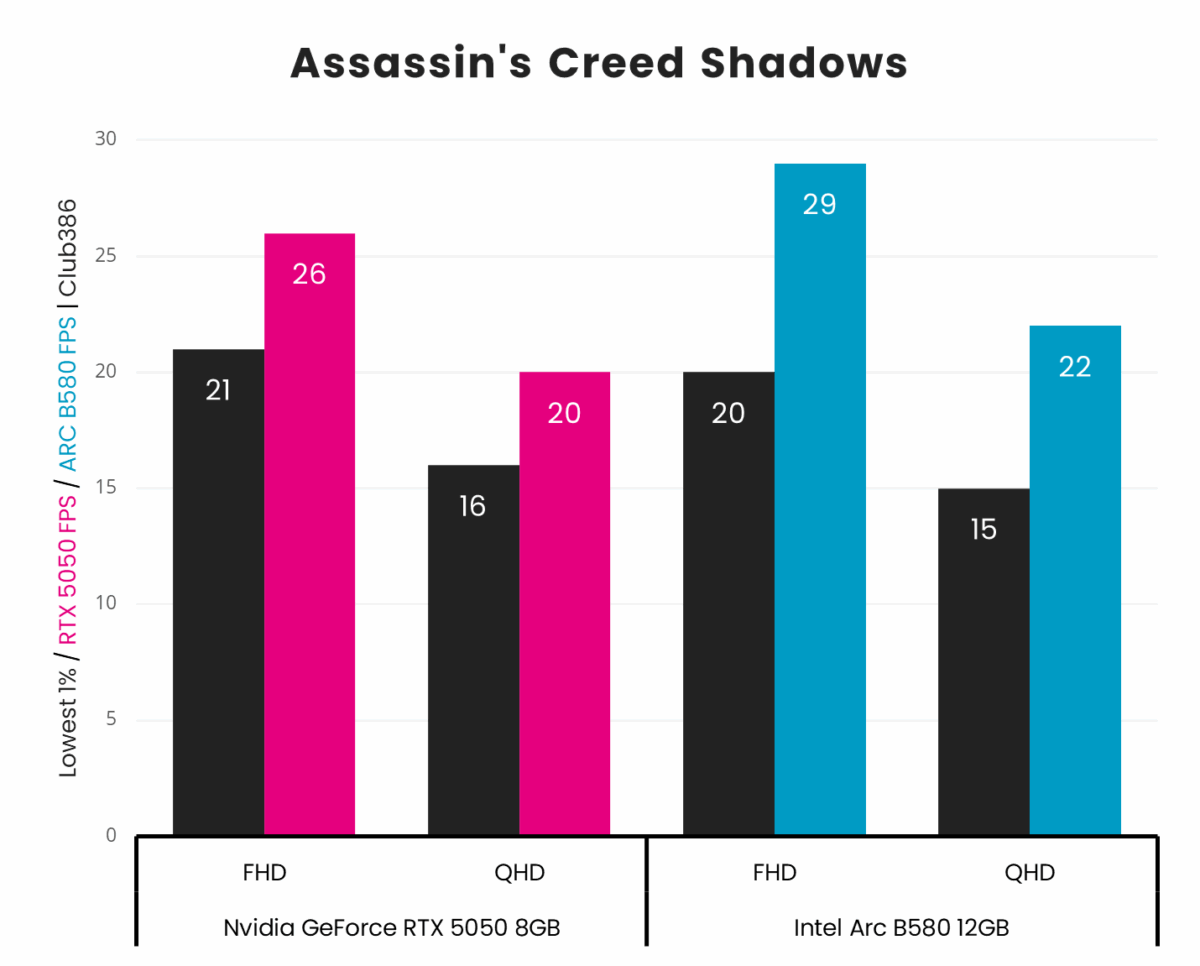
Assassin’s Creed Shadows is a beautiful but difficult game to run at maximum settings, ray tracing included. Arc B580 proves the better performer, but RTX 5050 is sneaking up behind despite Intel equipping its contender with a larger buffer.
Neither card has the horsepower to run the game natively to a satisfactory level at native FHD or QHD. However, upscalers would provide the necessary breathing room for a 30fps experience on each.
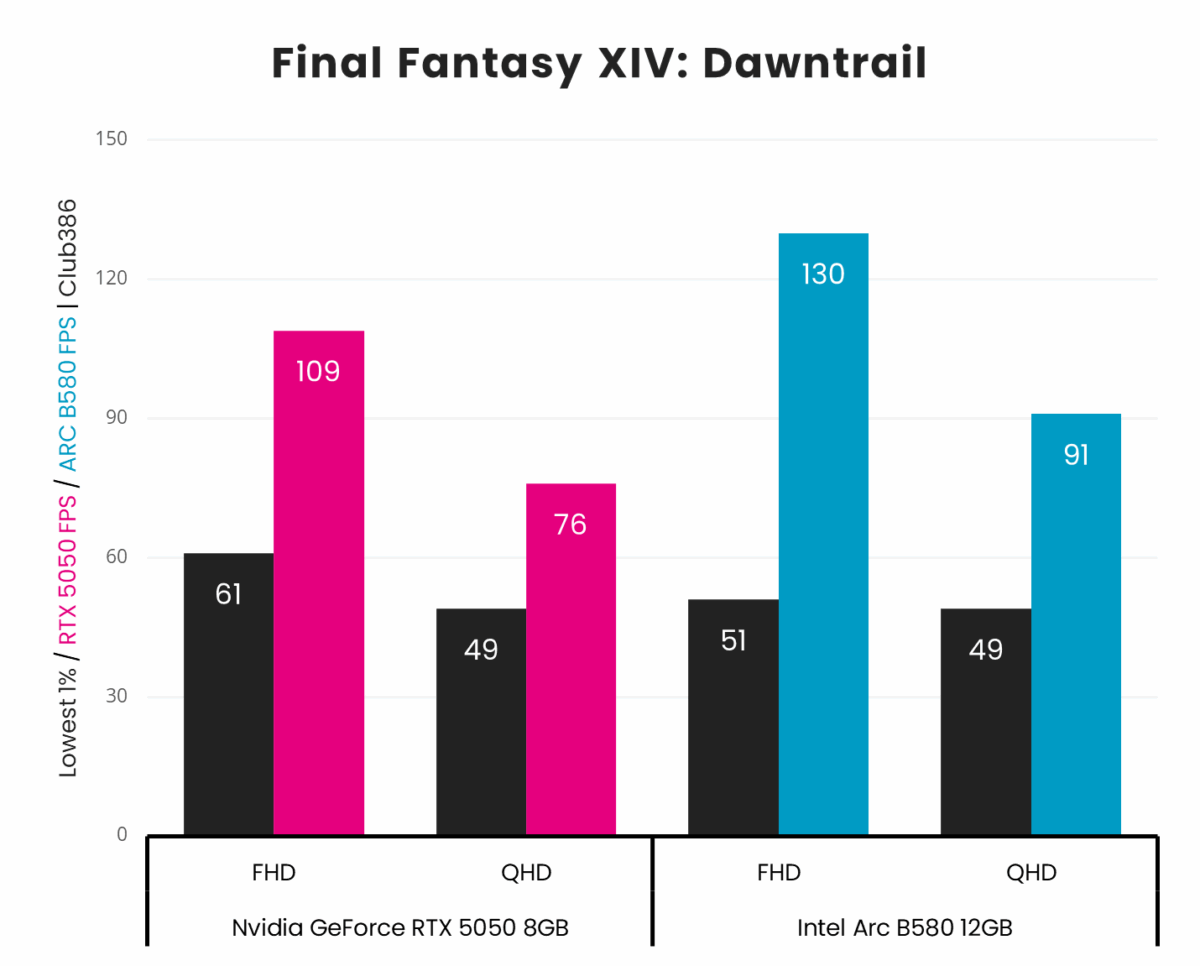
RTX 5050 expectedly concedes rasterised ground to Arc B580 in Final Fantasy XIV: Dawntrail. However, the two cards are broadly comparable at either resolution, pushing triple-digit frame rates at FHD and staying north of 60fps at QHD.
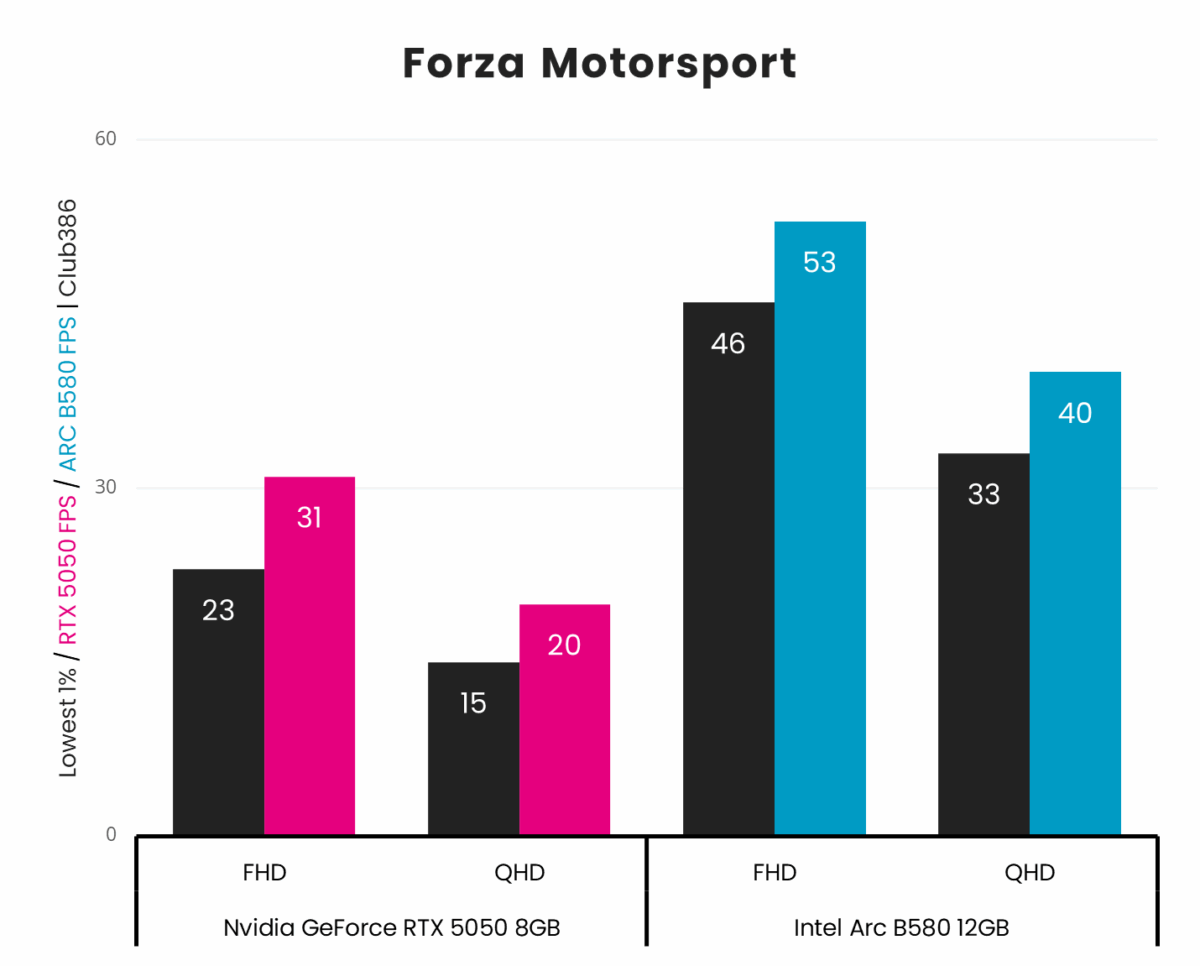
Racing along with ray tracing in Forza Motorsport proves too much for RTX 5050, which scrapes a 31fps average at FHD before hitting the pits with 20fps at QHD. Meanwhile, Arc B580 proves a much smoother drive at both resolutions, clocking in at 53fps and 40fps, respectively.
The reason for this large difference in frame rates comes down to memory bandwidth and capacity. RTX 5050 with 8GB of VRAM can’t hold as much data as Arc B580 with 12GB, nor can the card switch out assets as quickly. In a demanding scenario like this which calls for both, Intel naturally takes the lead over Nvidia.
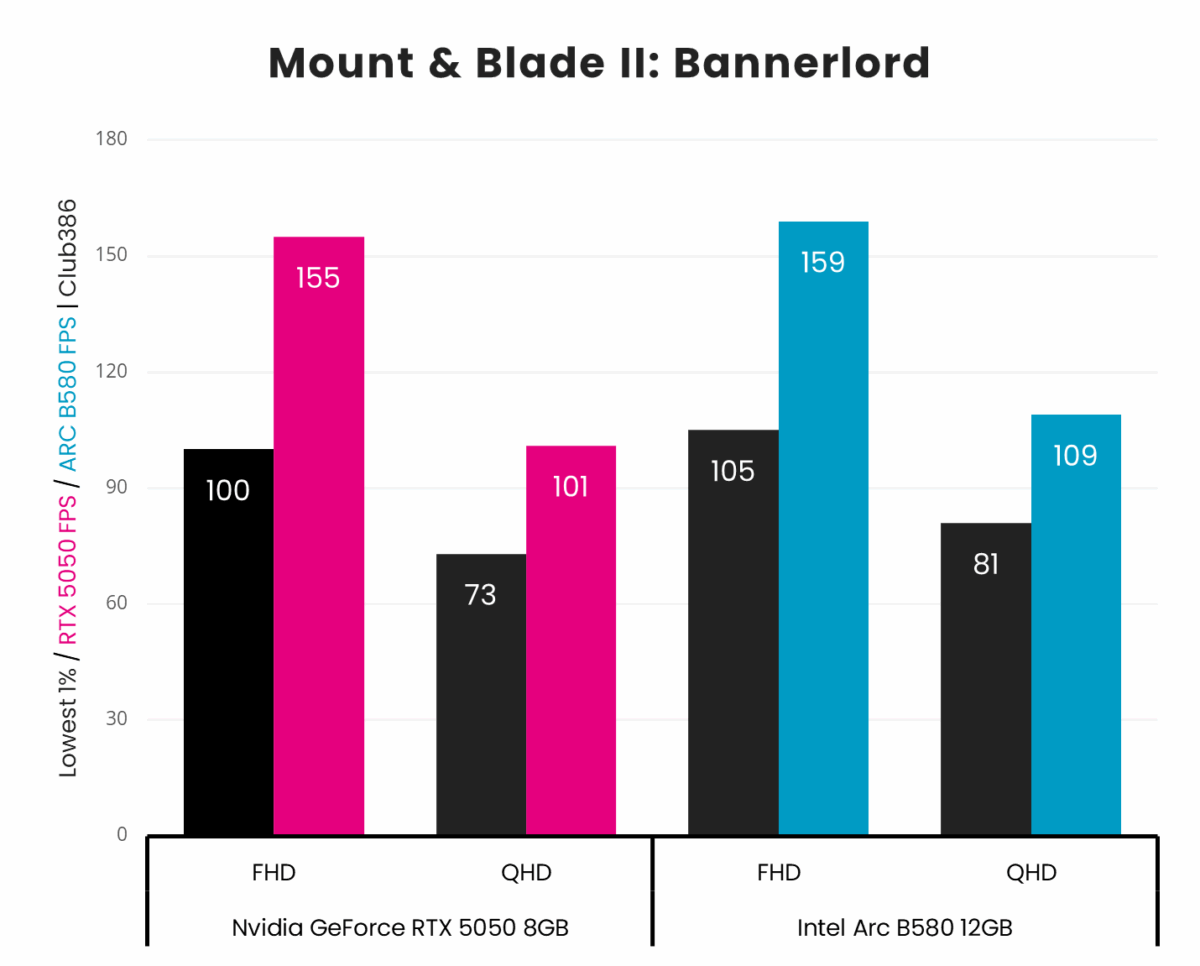
Crossing blades in Mount & Blade II: Bannerlord, RTX 5050 proves a worthy foe to Arc B580. Each card pushes north of 150fps at FHD and 100fps at QHD, making for an excellent experience on either.
Nonetheless, there can be only one lord of this chart and it’s Arc B580.

Your reactions can only be as fast as your frame rate in competitive shooters, making performance paramount in games like Rainbow Six Siege X. In terms of raw performance, Arc B580 wins out over RTX 5050.
However, Nvidia’s card does offer advantages in Ubisoft’s FPS beyond raw frame rates. Siege X supports Nvidia Reflex, which keeps system latency as low as possible. Intel does have an equivalent, Xe-LL, but the feature is nowhere near as prevalent.
DLSS & XeSS
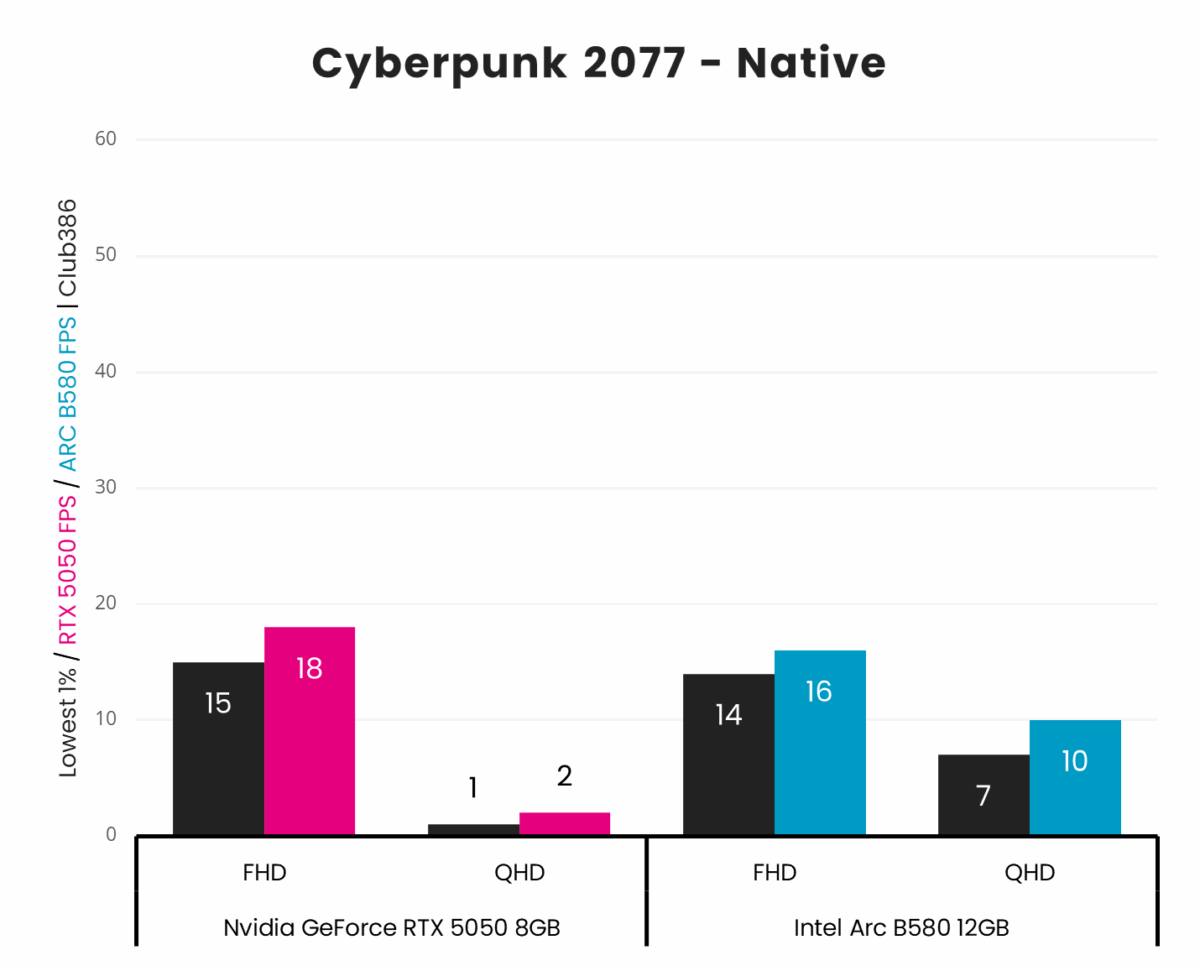
I’m employing Cyberpunk 2077’s RT Overdrive preset to put Nvidia DLSS 4 and Intel XeSS 2 to the ultimate test. This is one of the most-demanding workloads you can throw at a graphics card, as native frame rates in the chart above demonstrate.
The only way is up for RTX 5050 and Arc B580, with neither pixel pusher coming close to an acceptable frame rate out the gate. Nvidia’s budget champion performs particularly poorly at QHD, with a slideshow average frame rate of 2fps.
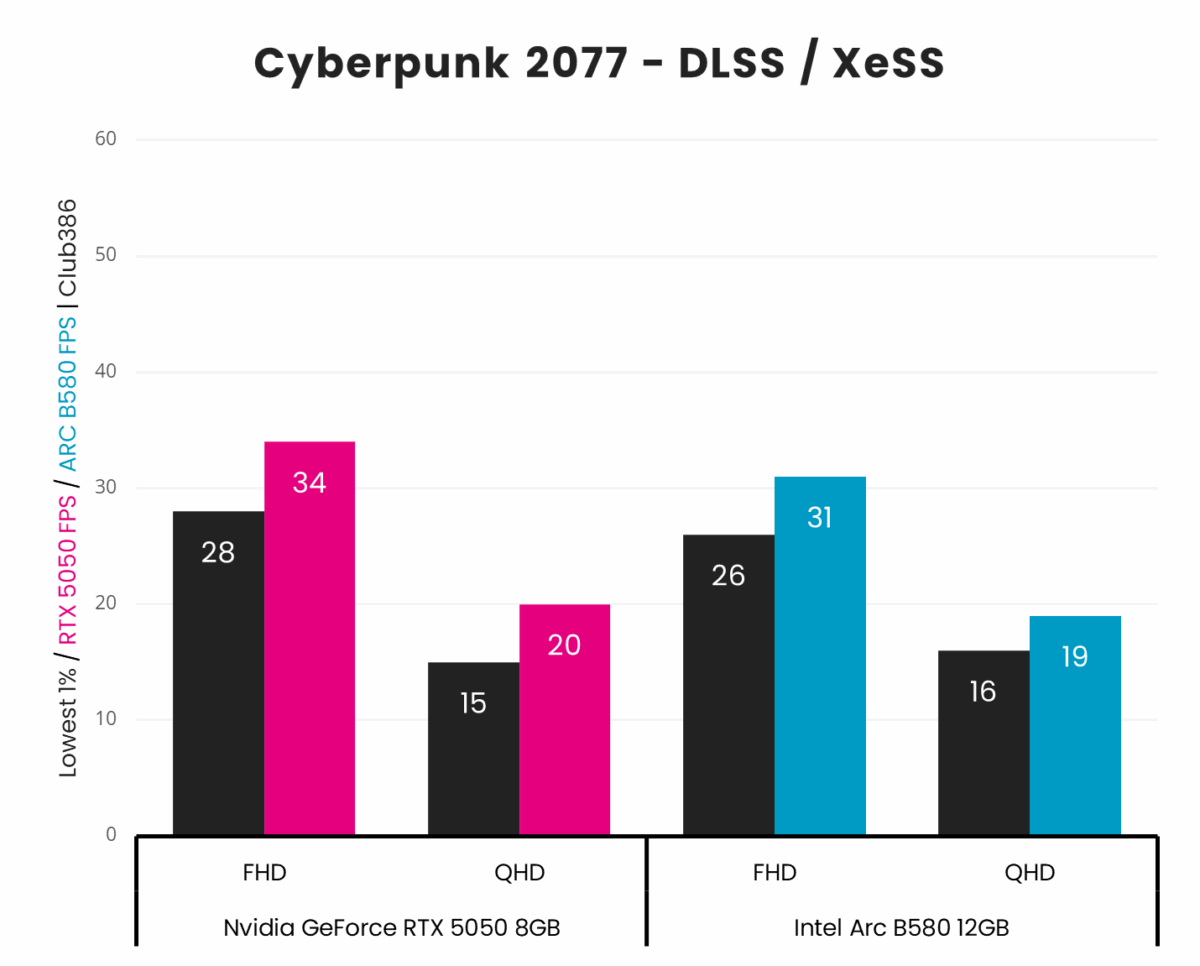
Toggling Nvidia DLSS and Intel XeSS brings performance to more palatable levels. Both RTX 5050 and Arc B580 are able to surpass the 30fps threshold at FHD, albeit barely and with sub-30fps minimums.
Upscaling proves transformative for RTX 5050 at QHD, rising from 2fps to 20fps. Meanwhile, Arc B580 enjoys a healthy increase, from 10fps to 19fps. Sadly, neither frame rate cuts the mustard and I’ll need to either use a lower quality upscaling preset or turn down a few settings to achieve playable performance.
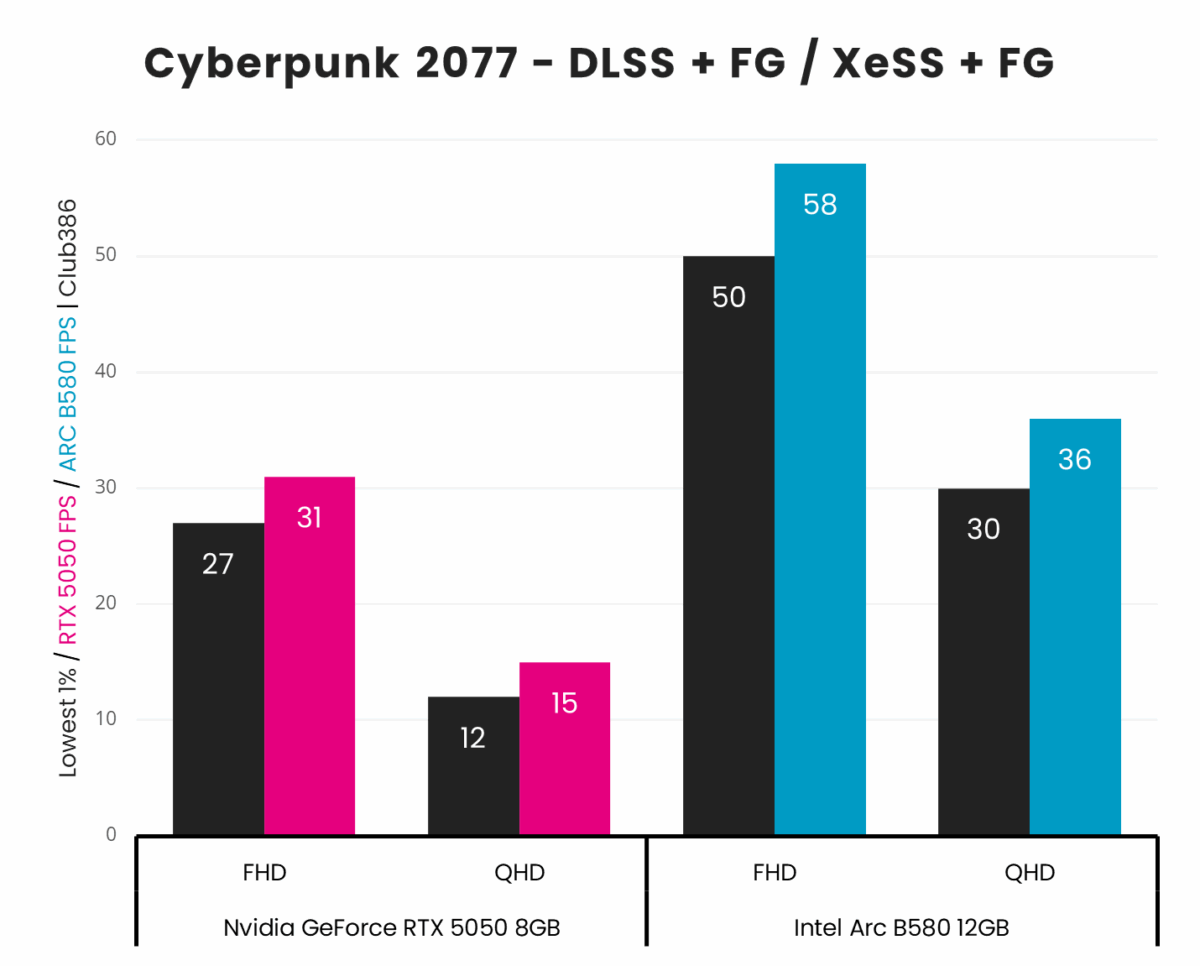
Toggling frame generation in tandem with upscaling leads to a tale of two results. Using XeSS-FG, Arc B580 frame rates almost double. Meanwhile, DLSS Frame Generation on RTX 5050 results in performance regressions, as the card’s buffer and bandwidth buckles under the rendering strain.
While Arc B580 frame rates look attractive in the chart above, they don’t portray the less-than-ideal latency values they carry. Engaging frame generation without sufficient base performance of ~60fps leads to a smoother-looking experience but one that feels sluggish to play.
Vitals

There’s only a handful of decibels between the models I’ve tested. In this case, I’m comparing Intel Arc B580 Limited Edition and Gigabyte GeForce RTX 5050 Windforce OC.
Note that noise performance will vary between coolers for both cards. However, there is no Founders Edition reference model for RTX 5050 to compare to for these tests and subsequent vitals.

Arc B580 Limited Edition coasts along under load at a reasonable 55°C. However, the card feels cool as a cucumber next to RTX 5050 Windforce OC, which operates at a much hotter 75°C.
Given the 60W difference in TDP, this perhaps points to a large discrepancy in the capabilities of each card’s cooler than anything else. After all, Gigabyte’s model is about half the size of Intel’s.
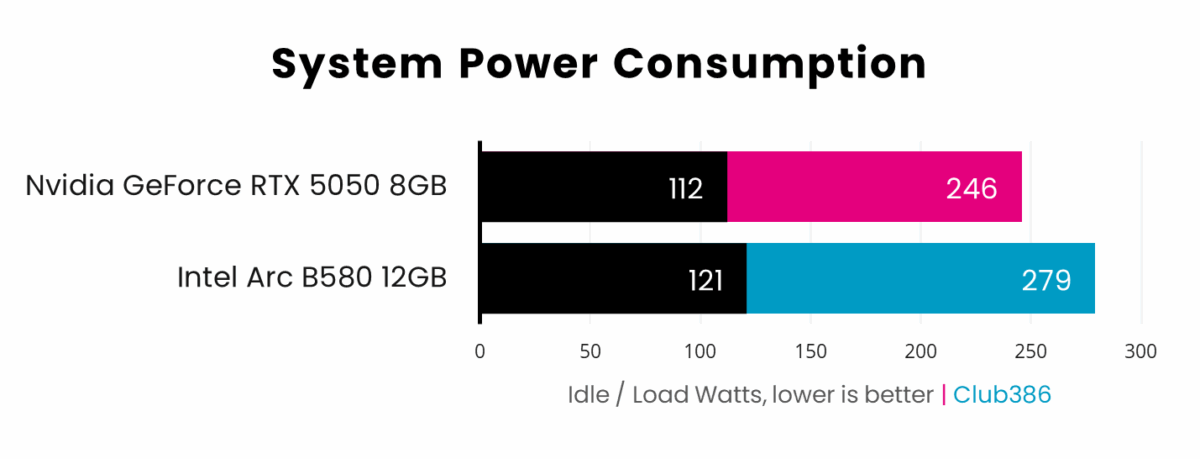
Despite a 60W difference in TDP on paper, real-world, system-wide power consumption is much closer. RTX 5050 proves the more frugal performer, keeping the ‘leccy ceiling at a relatively low 246W compare to Arc B580’s 279W.
Realistically, 33W isn’t worth paying much mind to. At most, it should only add a few extra quid (if that) to your annual energy bill.
Conclusion
Regardless of your preference for resolution or rendering, it’s clear from our test suite that Arc B580 is the better choice over RTX 5050. The graphics card generally boasts superior AI and gaming performance, in large part thanks to its 12GB of VRAM and greater bandwidth.
However, it’s more difficult to find Arc B580 at MSRP than RTX 5050. At the time of writing, I can find four variants of Nvidia’s card for $250 while Intel stock begins at $260 with only one model. If you can afford to stretch your budget, it’s worth spending the extra 10 bucks. Although, I wouldn’t spend much beyond that if possible.
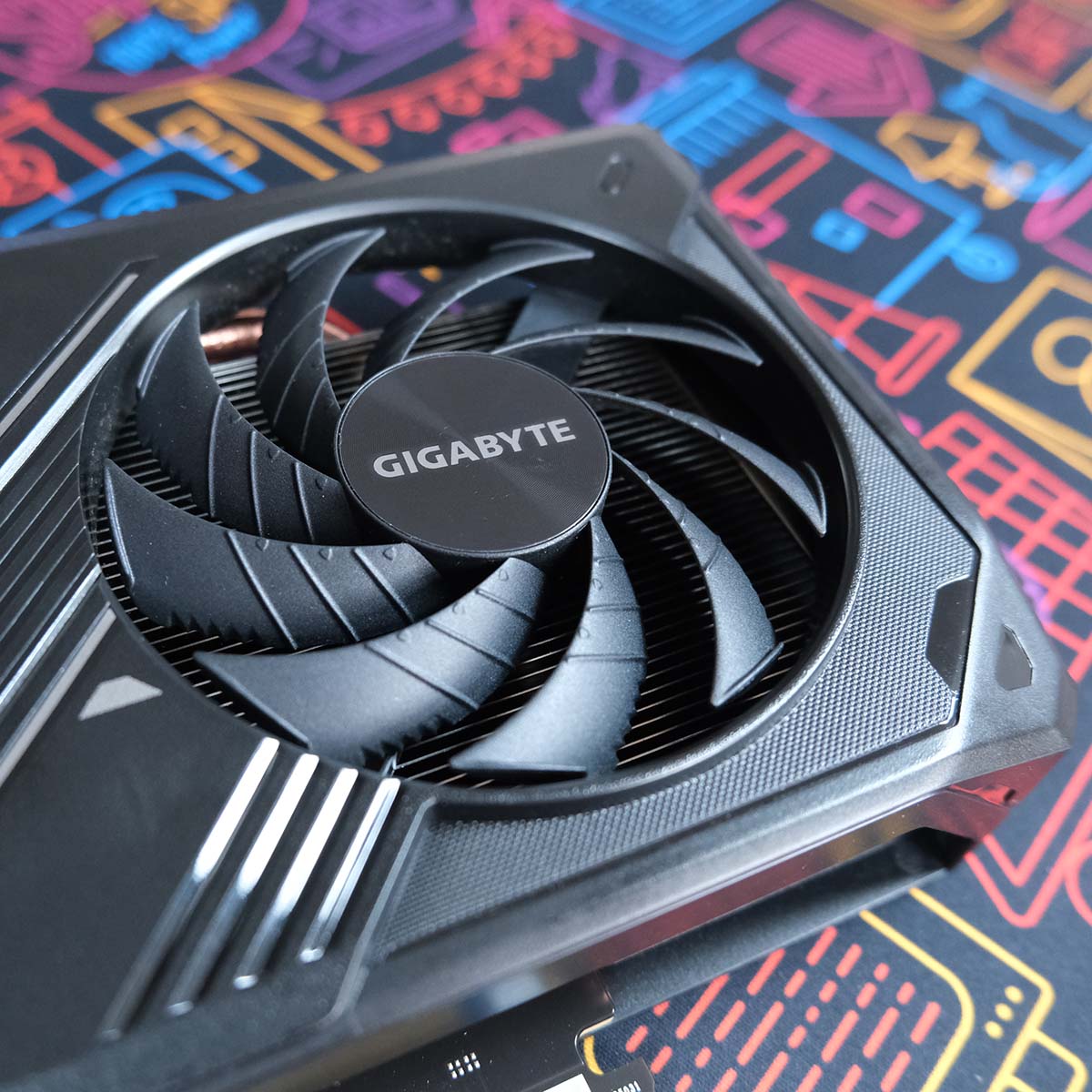
Nvidia GeForce RTX 5050
“GeForce RTX 5050 marks a welcome return from Nvidia to the $250 price point.” Read our review.
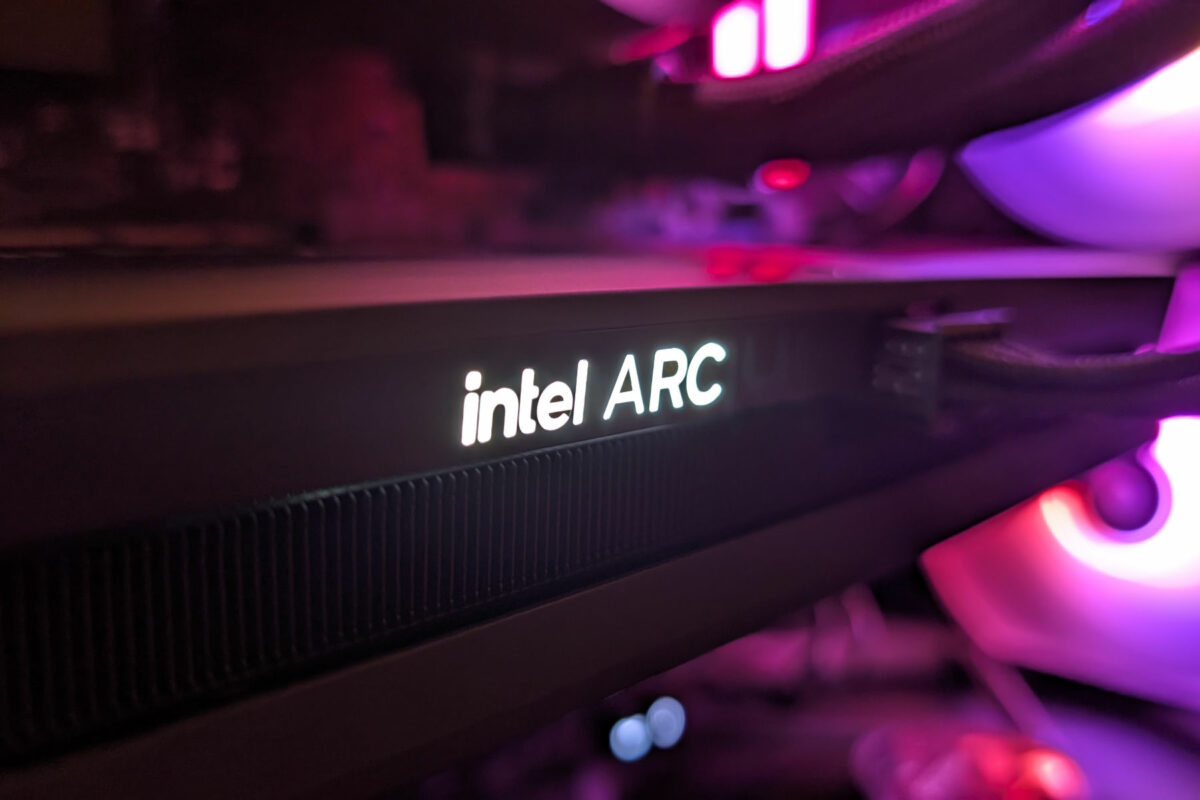
Intel Arc B580
“Arc B580 successfully disrupts the established graphics card hierarchy.” Read our review.
If you can find Arc B580 close to MSRP, then there’s no reason to consider alternatives. However, should your only option for that particular budget be RTX 5050 then it’s certainly worth considering.
Check out my GeForce RTX 5060 review to learn more about how much additional performance you can get for $300.


